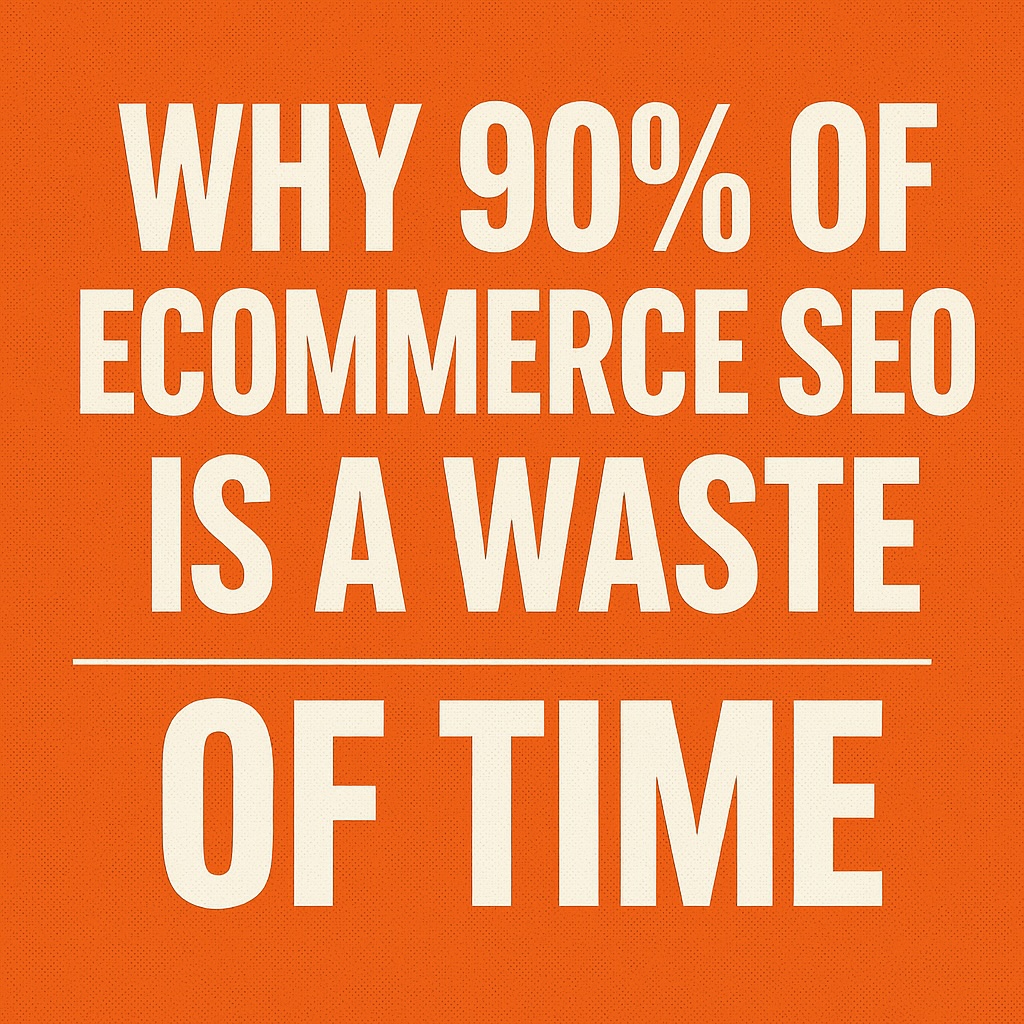You’ve installed Yoast, added ALT tags, built a few blog posts, and maybe even paid someone on Fiverr to “optimize your SEO.”
And yet… crickets.
Here’s the truth:
Most ecommerce SEO advice is outdated, bloated, or flat-out useless. If you want to win real rankings (and real sales), you need to stop checking boxes—and start doing what actually moves the needle.
Let’s break down what works now, and how smart ecommerce brands are using SEO to scale without burning money on ads.
🚨 The Real Problem: Most Ecommerce SEO Is Built for Google, Not Buyers
You’ve probably read the checklist:
- Title tags? ✅
- Meta descriptions? ✅
- Product schema? ✅
- Alt text on images of your socks? ✅✅✅
And that’s all good. But that’s not what’s going to skyrocket traffic or drive conversions.
Google’s smarter than ever—and your customers are too.
Ranking a page doesn’t matter if it doesn’t convert. And converting doesn’t matter if no one’s finding the right pages in the first place.
🔍 What Actually Works for Ecommerce SEO in 2024 and Beyond
1. Obsess Over Search Intent
Stop optimizing for keywords and start optimizing for what people actually want. Example:
Bad:"Best yoga mats" → sends them to your homepage.
Good:"Best yoga mats" → sends them to a curated comparison page that educates and sells.
Create content that satisfies the query and nudges the user down the funnel.
2. Product Page SEO Is King
Most ecommerce sites have weak product pages with:
- One-line descriptions
- Manufacturer boilerplate
- No real differentiator
Write 100–300+ words per product. Use FAQs, customer pain points, benefit-driven copy, and even semantic variations of your keywords (Google’s LLMs are watching).
3. Internal Linking Isn’t Just for Blogs
Use your blog content to funnel juice to your collections and top-selling product pages. Also:
- Crosslink between related products
- Link from collection pages to subcategories
- Create “best of” roundup posts with CTAs
4. Category Pages = Goldmines
Most stores ignore their category pages. Big mistake. These pages can rank for high-intent keywords like:
- “Delta 9 Gummies”
- “Best Men’s Waterproof Hiking Boots”
- “Vegan Protein Powder for Muscle Gain”
Give each one a strong H1, SEO intro, unique copy, and internal links. Think like a landing page—not just a product dump.
5. Backlink Outreach Is Still Underrated
No one wants to do it, but ecommerce stores with high-authority links destroy their competition. Even 2–3 quality backlinks per month to your category pages or product hubs can dramatically improve rankings.
We’re talking:
- Guest posting
- Brand mentions
- Influencer PR
- Digital publications in your niche
🧠 Bonus: The #1 SEO Move Most Ecommerce Sites Ignore
FAQ content.
It’s simple, it’s powerful, and it answers what your buyers are already Googling. Adding a few smart FAQs to each product page not only improves UX—it gives you a chance to rank for long-tail queries like:
- “Is Delta-8 legal in Florida?”
- “How long does CBD cream last?”
- “What size shoe should I order if I’m between sizes?”
Plus, it gives you rich results (the nice dropdowns on Google). More space. More clicks. More conversions.
💡 Final Word: SEO for Ecommerce Is Less About Tricks, More About Strategy
If you’re serious about ecommerce growth, SEO isn’t just a checkbox. It’s a scalable traffic engine that compounds over time. But only if you do it right.
At Page Authority Pro, we help ecommerce stores:
✅ Build high-converting product & category pages
✅ Rank for keywords that actually drive sales
✅ Outrank competitors with smarter content & strategy
✅ Scale sustainably without burning $$$ on ads
Want to See Real Ecommerce SEO in Action?
Let’s audit your store and show you where you’re leaving traffic (and money) on the table.

